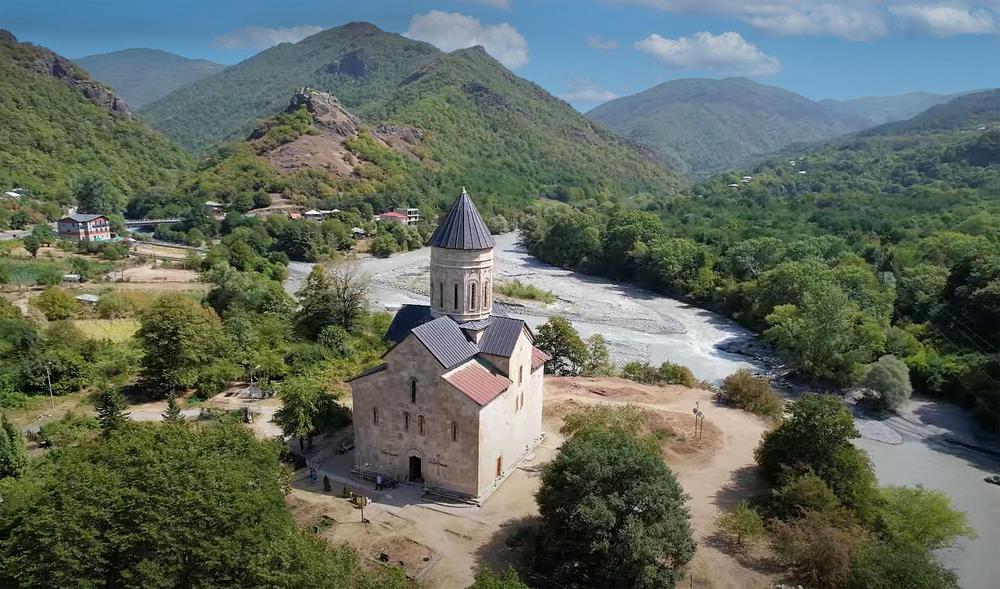Nikortsminda Cathedral, located in the village of Nikortsminda in the Racha-Lechkhumi region of Georgia, is a remarkable example of Georgian ecclesiastical architecture. Built between 1010 and 1014 by order of Bagrat III, the first king of united Georgia, this cathedral has largely retained its original structure, making it a rare survivor of its era. The foundation was laid in honor of St. Nicholas, establishing the site as a cultural centerpiece of the Racha Saeristavo, a feudal administrative unit at the time.
The cathedral's design reflects the Georgian cross-dome style, characterized by a six-conch-within-rectangle layout. Its exterior features smoothly hewn stone facades adorned with unbroken arcatures and richly detailed sculptural reliefs. Narrative carvings depict biblical scenes like The Transfiguration and The Judgment Day, alongside figures of saints, mythical creatures, and real animals. The dome, with its twelve architrave-adorned windows, sits atop the massive structure, transitioning from the drum's hexahedron to a circular base via spheric pendentives, allowing ample light into the space.
Inside, the cathedral boasts five apses that rise into the dome, resting on half-pillar shaped projections. The 17th-century frescoes, considered masterpieces of Georgian ecclesiastical art, include images of the cathedral’s founders, local feudal lords, and Archangel Michael. Notably, restoration efforts in 2012 uncovered previously unknown frescoes in the soot-covered gates, featuring works by the painter Javakhadze. The interior's delicate stonework, continuous arches, and richly carved facades exemplify the pinnacle of Georgian architectural mastery.
The three-story bell tower, constructed in the latter half of the 19th century, stands adjacent to the cathedral, adding to the historical tapestry of the site. Nikortsminda's enduring architectural beauty and historical significance have earned it a place on UNESCO's Tentative List for World Heritage Sites since 2007.
The cathedral not only serves as a testament to medieval Georgian craftsmanship but also inspired the renowned Georgian poet Galaktion Tabidze, who immortalized its grandeur in his poem “Praise to Nikortsminda.” Despite minor restorations, the cathedral remains a largely untouched relic of Georgia's architectural heritage, captivating visitors with its intricate designs and spiritual legacy.












